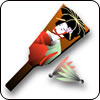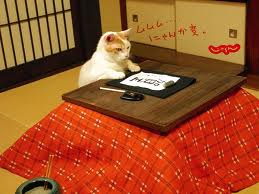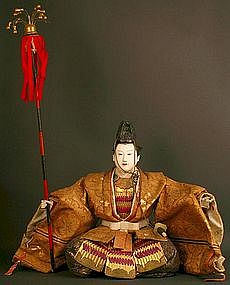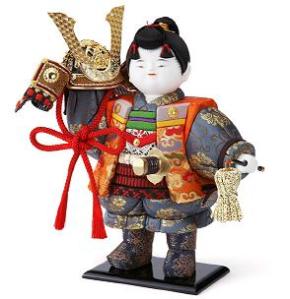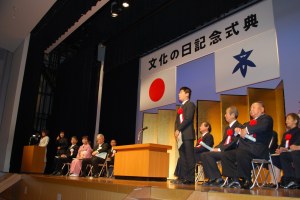The New Year’s celebrations are perhaps the most important occasion in the Japanese calendar. The festive time lasts three days and involves the whole family giving them an opportunity to gather and to acknowledge each other’s role in the group and the community.
As the New Year’s celebrations fall in the winter season, the decorations show a lot of pine needles.
Furthermore the New Year celebrations are a good reason to bring out special food. An interesting feature of the shared meal times is that all food is prepared in the old year, so that mothers and grandmothers and aunts and sisters can all sit back and enjoy the festive occasion without having to worry about meals.
The particular meal as shown above is called おせち料理 or おせちりょうり “osechi ryōri” and it consists mainly of as many different kinds of food as possible so as to please as many guests as possible.
The children usually entertain themselves with happy games and dress up parties. Particularly the girls enjoy wearing the most colourful kimono and spending some time with friends showing their splendid costumes.
One particular game that is played at New Year, while dressed up in such gorgeous kimono, is called はねつき or “hanetsuki”. It is an elaborate sort of badminton. Mind you, as the photo shows, it is anything like our modern badminton. Of course kimono would not allow anything less.
During New Year’s Eve many people go to their local temple to listen to the Old Year’s farewell gong being rung 108 times. During the three days of festivities many Japanese people go to their local shrine to receive blessings and best wishes for the New Year. Another opportunity to dress up.
The start of the New Year is also the time for おとしだま otoshidama or pocket money! Considerable amounts of money are given to the children, usually put into bank accounts controlled by parents. Future university studies or school trips, a new kimono, or a bike are an expense for which one needs to save. おとしだま helps.
せつぶん setsubun is the end of winter and it is an occasion of closing off the cold season and getting rid of “old demons”. This latter task involves usually a father dressed up as a demon and trying to scare the little ones (within reason), to just serve as a reminder that “out there things can get rough, but in here you are safe”. There is much shrieking and laughter on such occasions.
In many western countries such ideas also persist around St Nicolas, although Santa lost this dramatic streak in a smart commercial move; he highlighted his Rudolph and the fact that he wouldn’t visit just anyone. During setsubun, the おに or demons are “attacked and driven away” with thrown roasted soy beans. The children have an opportunity to show bravery in this matter. The children always win and afterwards each member of the party will eat as many beans as their age reflects. Everyone a winner!
In Sapporo, in Hokkaido, February is the coldest month of the year and in many places the land is covered with metres of snow. During the ゆきまつり or Snow Festival the authorities in Sapporo organise that huge truck loads of snow are brought to the main avenue, where people have an opportunity to sculpture all the snow into ice castles and the like. This custom has become an enormous tourist yen spinner. Teams from different parts of Japan, as well as other parts of the world can now participate and show off their skill. The sculptures win prizes and will be photographed and remembered for years to come.
The Hinamatsuri festival is in contrast to Children’s Day as the emphasis on that particular day has always been on the boys. The girls have felt somewhat neglected and with gender equality this day was set aside for girls.
もも “momo” means peach and せっく “sekku” means change of season. We are not too sure where Micky Mouse fits in, but obviously in this family he features greatly with Minnie at his side. Oh well, let the party begin!
Time goes on and the first stresses of the year and the workload are beginning to show. Let’s have another party! What better time than during the cherry blossom season. All over Japan millions of cherry trees blossom and it is a great time to sit outside with friends and work mates and have a meal under the magic cherry trees. The beauty of the trees is overwhelming.
On Children’s Day families celebrate the importance of having children. Although inheritance laws in the past would have favoured boys at least on paper, these days all children are acknowledged. Girls have hinamatsuri, so the boys still continue to get a little more attention on Children’s Day. The carp signify prowess, strength and endurance in adversity. Driving through the countryside at that time of the year is an exhilarating experience when one sees all those flying carp showing public happiness and joy for the family’s offspring.
This custom is not so much a festival as it is a cultural expression at a certain time of the year. June is the monsoon month and the endless rain seems to call out another form of endurance for the people. The water is essential for the rice planting and not having any water would be a natural disaster. Nevertheless a month of rain is almost too much to bear. So: more food and some fun. At least the weather spirits would cheer people up!
After the rainy season the warmth of the summer comes. Most of the seasonal hard work is behind and before the harvest there is a little time for another party and great food. Particularly the Sendai Tanabata celebrations are world-renowned as the people have developed great decorations and party spirit. The actual event that led to these celebrations is the Chinese astrological story of the two stars on opposite sides of the Milky Way, which are set to meet as lovers once a year on Tanabata. A good reason for another party!
On おぼん Obon it is thought that the spirits of the ancestors come back to earth to communicate with the living. People pay their respects and publicly acknowledge that their own achievements were only possible as they followed the efforts of those who went before them.
According to Wikipedia:
Tsukimi (月見) or Otsukimi, literally moon-viewing, refers to Japanese festivals honouring the autumn moon. The celebration of the full moon typically takes place on the 15th day of the eighth month of the traditional Japanese calendar; the waxing moon is celebrated on the 13th day of the ninth month. These days normally fall in September and October of the modern calendar. More festivities and getting together with family and friends.
On this day Japan highlights the importance of physical exercise and sport as a corner stone of healthy living. The Second Monday in October holiday came about as a result of the successful 1964 Tokyo Olympics.
On November 15 each year parents will take their children – girls of 3 and 7, and boys of 3 and 5 – to their shrine for blessings for their children’s good health, good luck and happiness. All children are dressed up for the occasion and are the centre of attention. All round happiness, food and joy and above all presents!
On the last day of the year, parents try to settle old matters, clean the house and prepare for the New Year. Out with the old and be ready for the new with a positive spirit.
Yummy soba noodles seem to help getting ready for the New Year.






